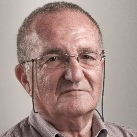Flow and Transport Processes in Groundwater Systems
A special issue of Water (ISSN 2073-4441). This special issue belongs to the section "Hydrogeology".
Deadline for manuscript submissions: closed (20 December 2023) | Viewed by 10848
Special Issue Editors
Interests: groundwater; vadose zone; solute transport; heat transfer; mathematical modeling
Special Issues, Collections and Topics in MDPI journals
Interests: numerical methods; transport phenomena in heterogeneous media; shock waves through porous media; decision support systems for water resources management
Special Issue Information
Dear Colleagues,
The Special Issue on “Flow and Transport Processes in Groundwater Systems” focuses on recent advances and prospects of groundwater studies including, but not limited to:
- Fundamental investigations addressing various experimental techniques, mathematical and numerical modeling of physical mechanisms for fluid momentum, and energy ranging from inertia to drag dominant balances, stochastic and deterministic methods, big data decision support, management strategies, and experience learned from case studies;
- Monitoring and prediction of groundwater flow and solute migration at different spatial and temporal scales, hydrogeochemistry, karst, freshwater–saltwater interactions, groundwater contamination, remediation, risk analysis, and protection;
- Effect of heterogeneity on dynamic and distribution of contaminants, calibrating flow and transport models, and uncertainty associated with predictions and observations.
We invite contributions from researchers involved with experimental and theoretical aspects linked to water flow and solute migration, with application to water resources, groundwater contamination and remediation, mining and hydrocarbon geology, geothermal resources, and related areas.
By presenting this integrative and multidisciplinary volume, we aim to transfer new knowledge to hydrologists, water resources planners, and policymakers engaged in the sustainable development of groundwater resources.
Prof. Dr. Alexander Yakirevich
Prof. Dr. Shaul Sorek
Guest Editors
Manuscript Submission Information
Manuscripts should be submitted online at www.mdpi.com by registering and logging in to this website. Once you are registered, click here to go to the submission form. Manuscripts can be submitted until the deadline. All submissions that pass pre-check are peer-reviewed. Accepted papers will be published continuously in the journal (as soon as accepted) and will be listed together on the special issue website. Research articles, review articles as well as short communications are invited. For planned papers, a title and short abstract (about 100 words) can be sent to the Editorial Office for announcement on this website.
Submitted manuscripts should not have been published previously, nor be under consideration for publication elsewhere (except conference proceedings papers). All manuscripts are thoroughly refereed through a single-blind peer-review process. A guide for authors and other relevant information for submission of manuscripts is available on the Instructions for Authors page. Water is an international peer-reviewed open access semimonthly journal published by MDPI.
Please visit the Instructions for Authors page before submitting a manuscript. The Article Processing Charge (APC) for publication in this open access journal is 2600 CHF (Swiss Francs). Submitted papers should be well formatted and use good English. Authors may use MDPI's English editing service prior to publication or during author revisions.
Keywords
- porous and fractured media
- groundwater and multiphase
- hydrology
- geochemistry
- solute transport
- field and laboratory studies
- conceptual and mathematical modeling
- heterogeneity
- climate
- water resources






